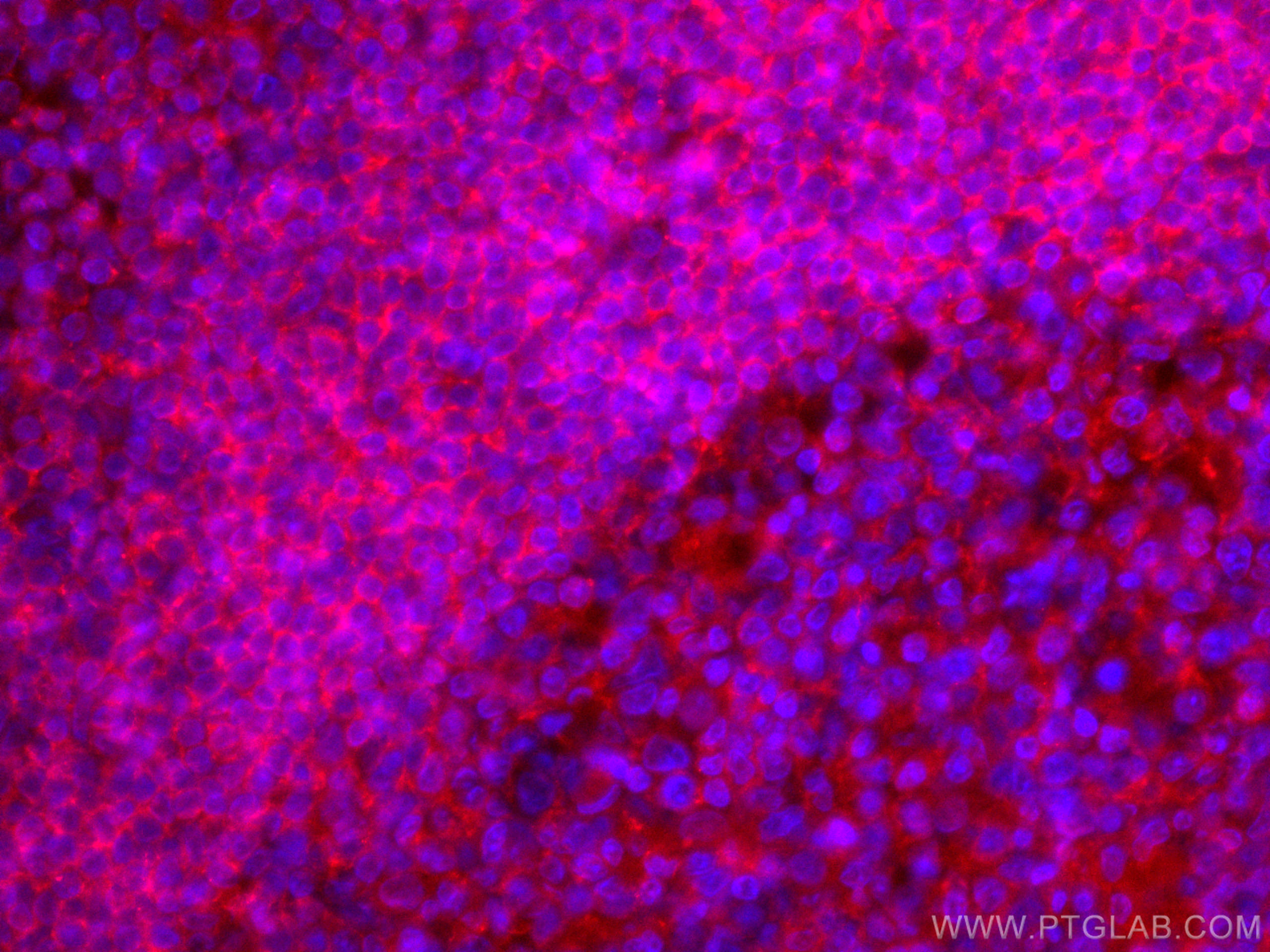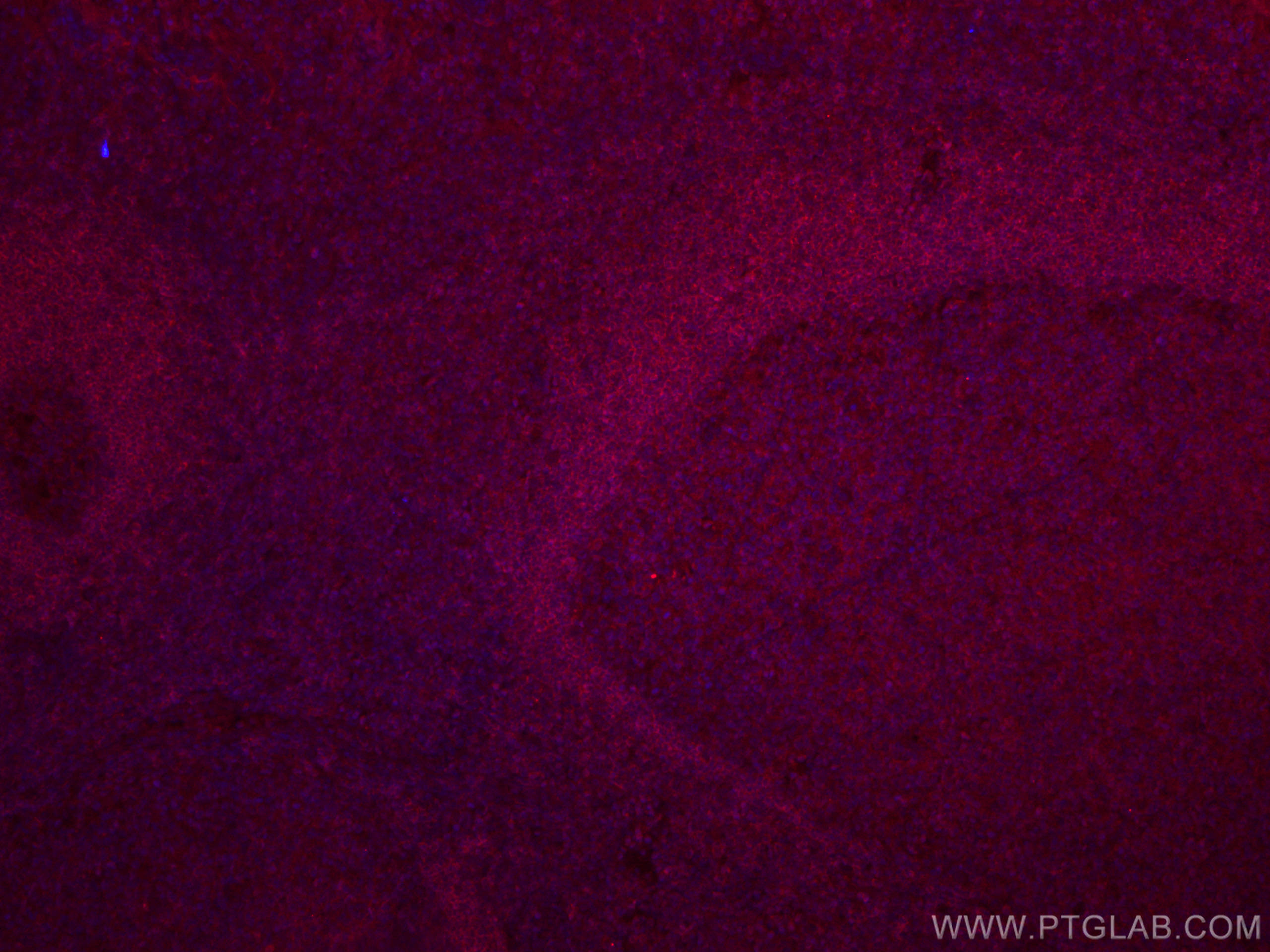验证数据展示
经过测试的应用
| Positive IF-P detected in | human tonsillitis tissue |
推荐稀释比
| 应用 | 推荐稀释比 |
|---|---|
| Immunofluorescence (IF)-P | IF-P : 1:50-1:500 |
| It is recommended that this reagent should be titrated in each testing system to obtain optimal results. | |
| Sample-dependent, Check data in validation data gallery. | |
产品信息
CL594-67424 targets CD72 in IF-P applications and shows reactivity with Human samples.
| 经测试应用 | IF-P Application Description |
| 经测试反应性 | Human |
| 免疫原 | CD72 fusion protein Ag14405 种属同源性预测 |
| 宿主/亚型 | Mouse / IgG2b |
| 抗体类别 | Monoclonal |
| 产品类型 | Antibody |
| 全称 | CD72 molecule |
| 别名 | CD72, CD72 molecule, CD72b, Lyb 2, LYB2 |
| 计算分子量 | 359 aa, 40 kDa |
| GenBank蛋白编号 | BC030227 |
| 基因名称 | CD72 |
| Gene ID (NCBI) | 971 |
| RRID | AB_2920132 |
| 偶联类型 | CoraLite®594 Fluorescent Dye |
| 最大激发/发射波长 | 588 nm / 604 nm |
| 形式 | Liquid |
| 纯化方式 | Protein A purification |
| UNIPROT ID | P21854 |
| 储存缓冲液 | PBS with 50% glycerol, 0.05% Proclin300, 0.5% BSA , pH 7.3 |
| 储存条件 | Store at -20°C. Avoid exposure to light. Stable for one year after shipment. Aliquoting is unnecessary for -20oC storage. |
背景介绍
CD72 is a type II transmembrane glycoprotein of 39-45 kDa and is expressed as a disulphide-linked homodimer (PMID: 1711157). CD72 is a pan B-cell marker covering the full range of differentiation from the very early stages of B cells to mature surface Ig+ B cells (PMID: 1384316). It is expressed in all stages of B cell development except plasma cells. CD72 is also expressed by dendritic cells, tissue macrophages in the red pulp of the spleen and von Kupffer cells in the liver (PMID: 8561576; 1384316). CD72 is the ligand for CD5 (PMID: 1711157). CD72 is a negative regulator of BCR signaling (PMID: 9590210). Interaction of CD100 with CD72 strictly tunes the strength of BCR signals and is essential for maintaining immunological homeostasis as well as generating a proper immune response (PMID: 16113236).
实验方案
| Product Specific Protocols | |
|---|---|
| IF protocol for CL594 CD72 antibody CL594-67424 | Download protocol |
| Standard Protocols | |
|---|---|
| Click here to view our Standard Protocols |

